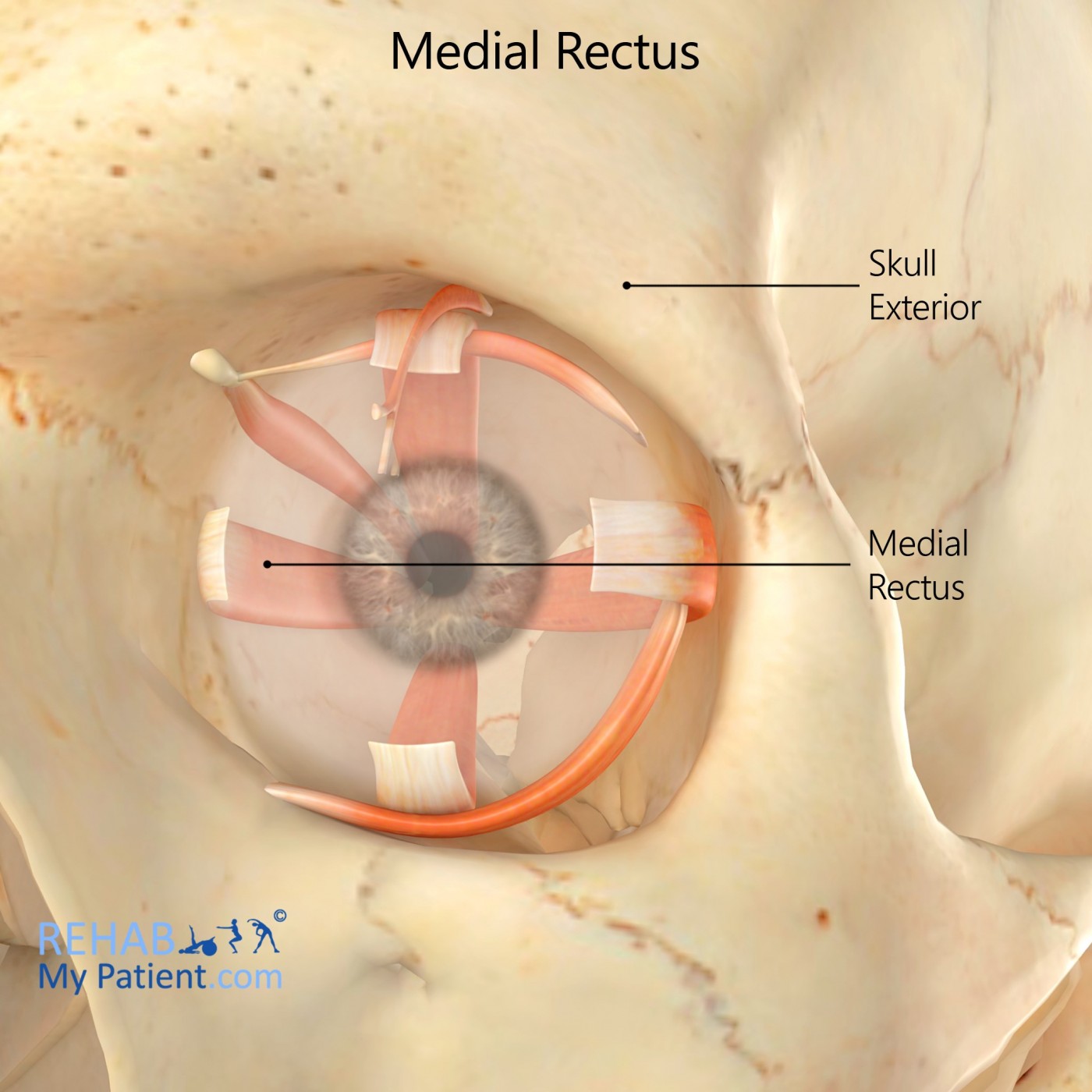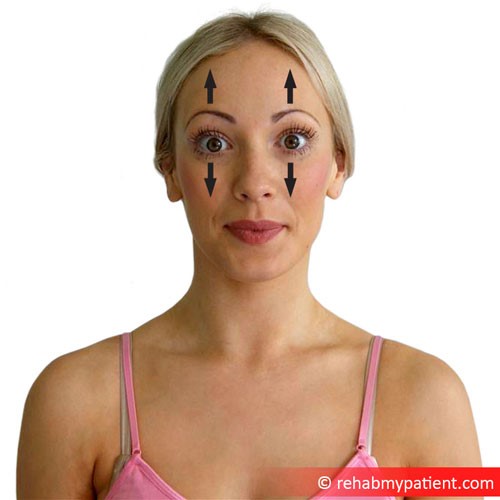
General information
The medial rectus is an ocular muscle that turns the eye inward.
Literal meaning
The middle straight muscle [of the eye].
Interesting information
The medial rectus is part of a group of skeletal muscles called the extraocular muscles of the eye.
Extraocular muscle disorders, such as extraocular muscle palsy, can cause an individual to experience symptoms of visual confusion, vertigo, oscillating or rapid image movement, or double vision. Extraocular muscle palsy is often caused by stroke, trauma, or can be present at birth. A traumatic event, or genetics, may cause oculomotor nerve damage, causing the eye to turn out and downward with the inability to turn in or upward.
Trauma to the eye and nose area of the face may cause swelling of or tear to the medial rectus. Common symptoms may include double vision, periorbital oedema, limited adduction or abduction of the eye. In many cases, NSAIDs, such as ibuprofen, will treat and resolve the issues that occur with medial rectus injuries, but in extreme cases, surgery may be required.
Origin
Annulus of Zinn.
Insertion
5.5mm medial to the limbus.
Function
Moves the eye inward.
Nerve supply
Inferior division of the oculomotor nerve.
Blood supply
Medial muscular branch of the ophthalmic artery.

Relevant research
The degree of fracture of the unilateral medial orbital wall correlates with the injury to the medial rectus muscle, on the same side as the fracture. Fracture to the medial orbital wall constitutes most ocular injuries. When fracture occurs, the medial rectus must withstand extra pressure. The more damage sustained to the medial orbital wall, the more pressure the medial rectus must endure.
Wang, L, Wang, J. (2012). “On the positive correlation between the percentage of acute fracture of medial orbital wall and the degree of injury of affected medial rectus muscle by CT image”. European Journal of Radiology. 81:1, 58-61.
Type 1 Duane syndrome, is a rare type of disorder that inhibits the individual from moving the eye outward. Due to the position of the eye, patients often develop the habit of turning their head to be able to see fully from both eyes. Common treatment includes weakening the muscles of the medial rectus to allow the eye to take on a normal position. Jampolsky suggested that medial rectus recession of both eyes was necessary to correct the condition. Upon further research in a limited study, those who received medial rectus recession of both eyes exhibited correction of the head turn symptom.
Dotan, G. Klein, A, Ela-Dalman, N, Shulman, S, Stolovitch, C. (2012). “The efficacy of asymmetric bilateral medial rectus muscle recession surgery in unilateral, esotropic, type 1 Duane syndrome”. Journal of American Association for Pediatric Ophthalmology and Strabismus. 16:6, 543-547.
Medial rectus exercises
Eye circles
Keep eyes opened and move eyes in a clockwise direction. If this is uncomfortable, close eyes to perform this exercise. Circle eyes around fifteen-twenty times. Repeat circling in the counter-clockwise direction. Repeat this exercise three times a day.
Eye contractions
Begin this exercise by closing eyes as tight as possible and hold for four seconds. Open eyes and blink as quickly as possible fifteen times. Repeat this exercise five times a day.

Sign Up
Sign up for your free trial now!
Get started with Rehab My Patient today and revolutionize your exercise prescription process for effective rehabilitation.
Start Your 14-Day Free Trial